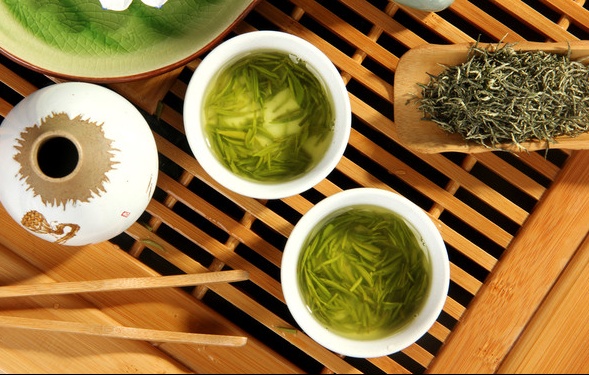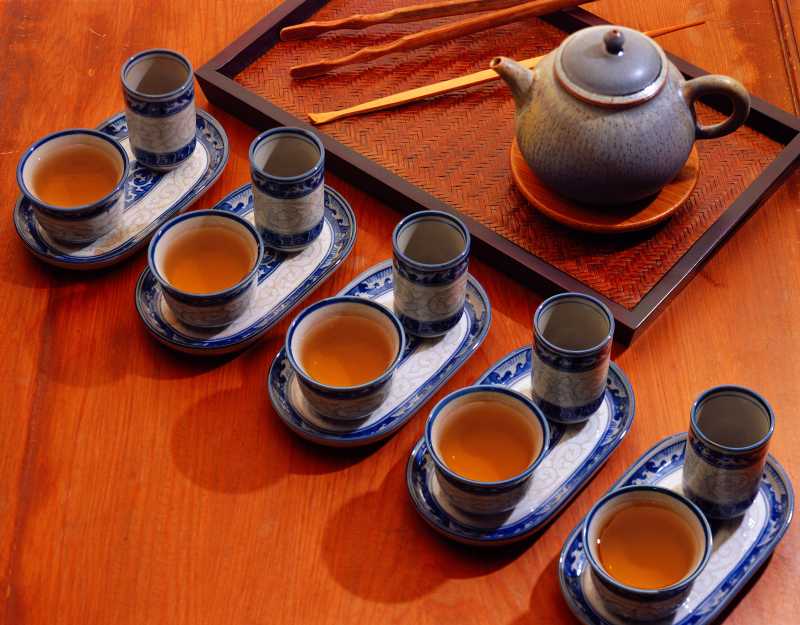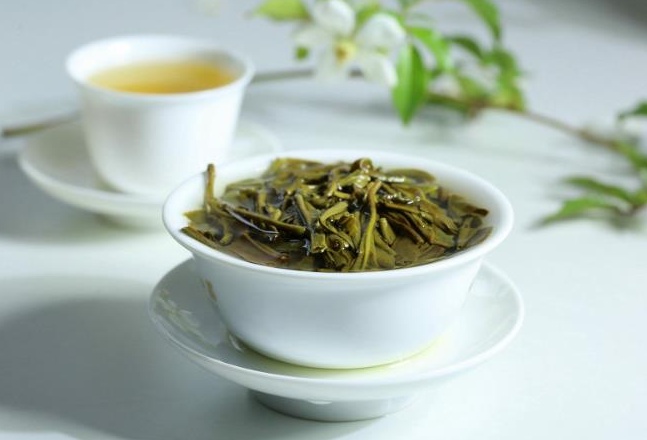Correct brewing method is almost as important as tea quality in facilitating the best flavor and health benefits of green tea. Around the 8th century AD, Lu Yu, the author of the Classic of Tea, the first book about green tea, devoted himself in detail to this topic. He also wrote another book in which he systematically recorded the significance of different types of water on the effects of tea. In practice, the preparation of each tea variety should be carried out individually and can be varied or optimised in terms of taste. It is important to place special emphasis on activating the health benefits of each type of green tea in the best possible way.

The tea brewing technique includes three key factors: the amount of tea, the temperature of water, and the brewing time. The amount of tea is to put an appropriate amount of tea in each cup or pot; the temperature of water is to brew tea with water at an appropriate temperature; the brewing time has two meanings: one is to brew the tea to the appropriate concentration and start pouring out for drinking, the second one means that some tea leaves need to be infused several times, and how long it takes for each time.
- Amount of tea
To make a cup of tea or a pot of tea, we must first measure the amount of tea leaves. The amount of tea leaves used each time has no unified standard, but is mainly determined by the type of tea, the size of the tea set, and the drinking habits of consumers.
Different types of tea correspond to different amounts. Generally speaking, for brewing red and green tea, the ratio of tea to water is roughly 1:50, that is, about 3 grams of dry tea leaves with 150 milliliters of boiling water. For brewing Pu’er tea, the ratio is better to be 1:30, that is, 5 grams of tea with 150 ml water. For brewing oolong tea, the ratio should be 1:20, that is, 5 grams of tea to 100 ml tea. The key to the amount of brewed tea is to master the ratio of tea to water.

The amount of tea used is also closely related to consumers’ drinking habits and the tea ware. In some areas where people eat more meat and less vegetables, such as Tibet, tea has become a physiological necessity. People prefer to drink tea with strong flavor, adding sugar, milk or salt, thus more amount of tea is used. For areas like North China and Northeast China, people prefer to drink scented tea and use larger teapots, thus the amount of tea is less. For places where green tea is more popular, such as the south of Yangtze River, people use smaller porcelain cups or glass cups, and they don’t consume much tea each time. In Fujian, Guangdong, Taiwan and other provinces, people like to drink Gong Fu tea, which has small tea set but more infusions.
- Water temperature for making tea
Water temperature is essential to tea brewing. For instance, for green tea, high water temperature reduces or even damages certain substances (e.g. vitamins, antioxidants, amino acids) and dissolves others more effectively (e.g. oxalic acid, certain tannins and catechins). On the contrary, when the temperature is too low, certain active ingredients dissolve too little or hardly at all in the water.
Generally speaking, the water temperature of tea is positively correlated with the solubility of the effective substances in the tea. Usually for high-grade green tea, especially some tea with delicate buds and leaves (e.g. Longjing, Anji Baicha), water around 80℃ is perfect, and the proper utensil is glass ware or Gaiwan. For the black tea, the ideal water temperature is around 90℃. For oolong tea or post-fermented tea (e.g. Pu’er tea), you can use boiling water at 100 ° C to brew, as such, the flavour and scent of the tea can be activated. The higher the water temperature, the greater the solubility, and the thicker the tea soup; conversely, the lower the water temperature, the lower the solubility, and the lighter the tea soup.

- Brewing time and frequency
The time and frequency of tea brewing vary greatly, relating to the type of tea, the temperature of water, the amount of tea used and the drinking habits. For the green tea, if brewed by water of 80 ℃, the tea usually can be infused for three times. The infusion time increases one after another. For instance, the first infusion time for a cup of green tea is 1 minute, after the tea is served, the second infusion time should be around 1.5-2 minutes, while the third infusion time is between 2-3 minutes. According to the measurement, the soluble substance of green tea can be leached from 50 to 55% for the first infusion, about 30% for the second time, and about 10% for the third infusion.
However, the infusion frequency varies depending on the tea type and variety. For brewing oolong tea, small Zisha teapot is an ideal choice, which can absorb the fragrance of tea. In the case of a large amount of tea (about half a pot), there are at least four times infusion. The first infusion should be poured out in 1 minute, the second infusion is 1 minute and 15 seconds, the third infusion is 1 minute and 40 seconds, and the fourth time is 2 minutes and 15 seconds. In other words, the brewing time is gradually increased from the second infusion, so that the concentration of the tea soup is more even among different times. For post-fermented tea like Pu’er tea, because of its characteristics, the brewing time can extend to as many as eight to nine times.

Ultimately, any tea preparation is a compromise to optimise health effects by achieving the best possible mixture of substances. This does not depend on the workings of individual substances on their own, but on the complex benefits of the mixture; the unique blend of active ingredients in green tea is primarily responsible for its major health benefits. Most ingredients produce a much healthier effect through binding to certain ingredients and buffering others.


